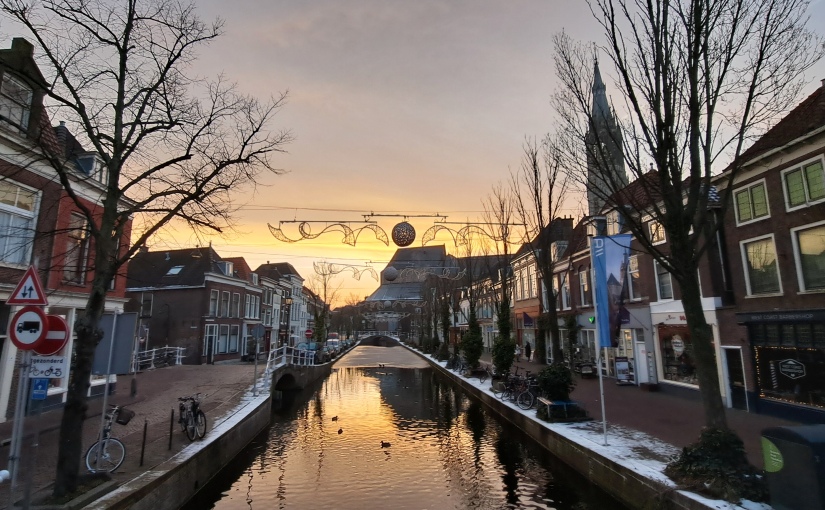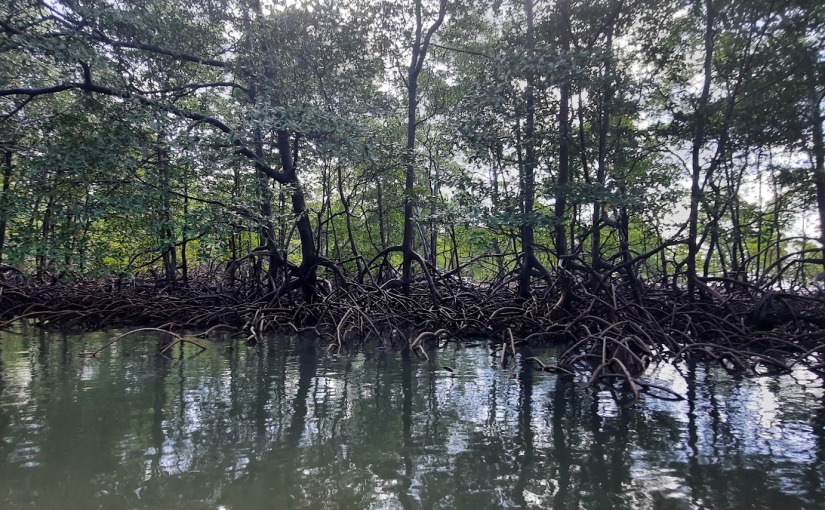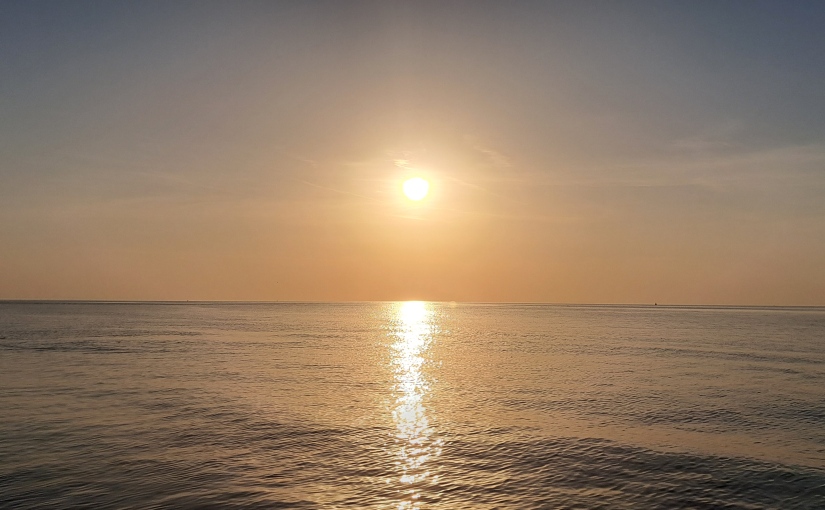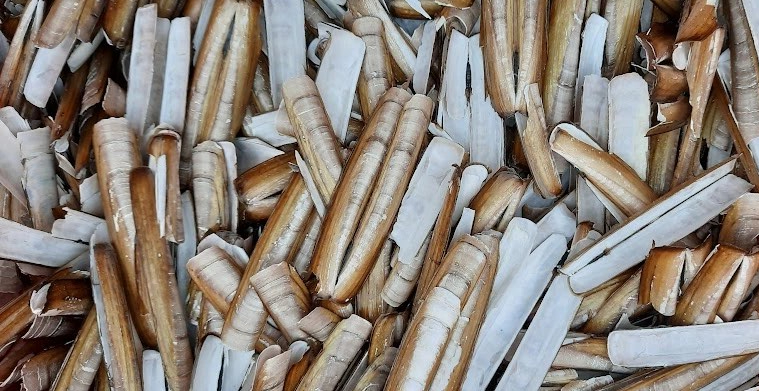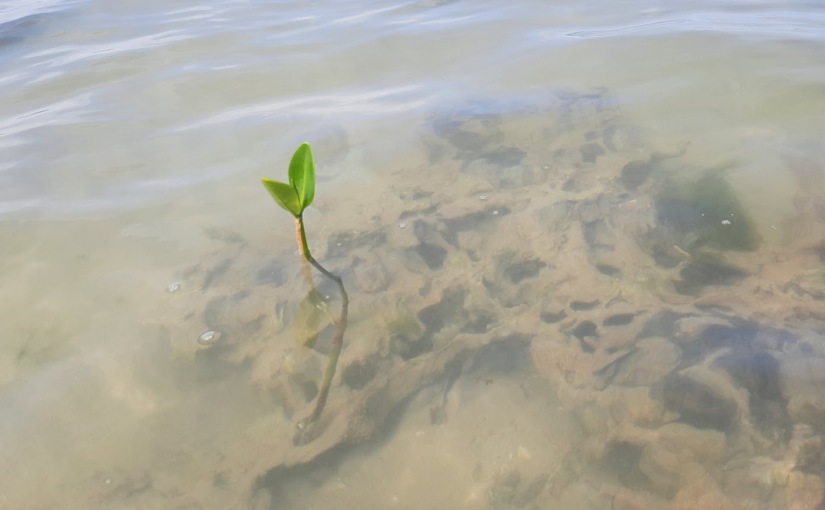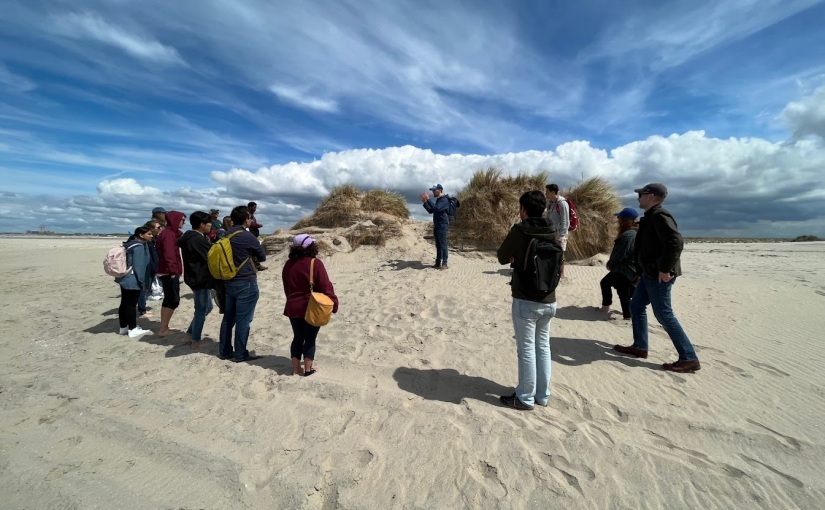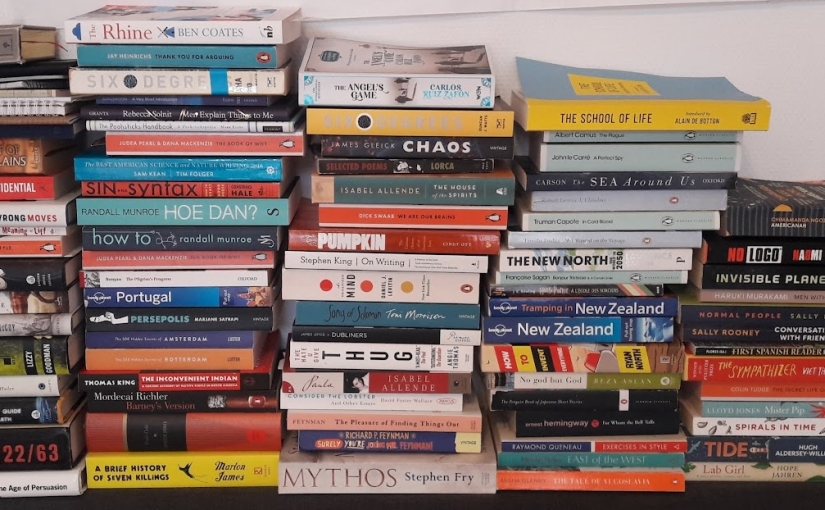I am a beach nerd, bookworm, serial dabbler, baker of bagels and destroyer of waffles! This is a place to share my research and other cool things that piqued my curiosity.
Book Club (2023)
Belated happy new year! I wrote this post while waiting for a delayed flight back to the Netherlands over a month ago, but never got around to uploading it. After clawing my way out of the gluttonous vortex that is the week between Christmas and New Year’s Eve, I found myself in a bit of a reflective mood. 2023 was a year full of personal changes and transitions (a new job, among others), and I have much to be grateful for. It has also been a turbulent year for humanity, with climate change rearing its ugly head in new and worrying ways, and growing conflicts around the world, especially in the Gaza and the Ukraine.
However, a dependable constant through these many changes has been a steady diet of books. After sharing my favourite books of 2022, I thought I would do the same again this year. Again, they are presented in more or less the order that I read them, and they include books that devoured my attention, changed my perspective, or just made me laugh. None of these books have anything to do with coastal engineering and most are fiction, but I am a firm believer that reading widely is good for your research and more importantly for the soul. Hopefully you find something here that sparks your curiosity- let me know what you think if you read any of them!
Continue reading Book Club (2023)Saving the Mangroves, One Fence at a Time
Mangrove forests provide valuable coastal habitats but also provide a natural form of coastal flood protection and a host of other services. However, many of these mangrove forests are threatened by coastal development and groundwater pumping-induced subsidence, among other natural and human changes. Part of the challenge is that mangroves are extremely choosy about their habitat, and need just the right combination of tidal submergence and mud to take root. If these habitats are thrown out of balance by people or natural causes, it becomes hard for new mangrove seedlings to grow there and sustain the forest.
To make happier places for the mangroves to develop, different kinds of coastal fences/dams have been proposed. The general principle is that waves and currents are attenuated or blocked by the fences, which makes a nice quiet area behind them for mud to accumulate and mangrove propagules to take root. What impact do these structures have on the coastal “conveyor belt” transporting mud and propagules? Enter Nirubha Raghavi Thillaigovindarasu!
Just before Christmas, Raghavi successfully defended her thesis, “Mangrove-Sediment Connectivity in the Presence of Structures Used to Aid Restoration“. Beginning with a numerical model of a site in Indonesia to simulate the motion of rivers and tides, she then applied the SedTRAILS model to visualize and interpret the pathways of sediment and mangrove propagules as they journeyed along the coast. By adding structures to her model, she was able to demonstrate how this trapping behaviour has an influence in the vicinity of a structure but also up to a kilometer away.

PhD Opportunity: Coastal Sediment Connectivity
How can we ensure that vulnerable coasts and deltas remain robust to the effects of climate change? We need to better understand how sediment moves along our coasts and deltas, and plan to do so by treating coastal systems as networks of interconnected sediment pathways.
We are looking for a curious and motivated PhD candidate to work with us on an exciting project here at TU Delft in the Netherlands. The main goal of this position is to develop novel approaches to quantify sediment pathways and connectivity, and to use these approaches to inform coastal sediment management.
Our main strategy for ensuring the climate-robustness of the Dutch coast is to nourish or place sand to widen its beaches and dunes. However, the fate of sand placed on the coast is still poorly understood in the context of the full coastal system. Understanding where nourished sand goes is necessarily rooted in understanding the natural sediment transport pathways and connectivity of the system. To take advantage of advances in the field of network analysis and extend these concepts to analyzing sediment transport pathways in coastal systems, we established the framework of coastal sediment connectivity (Pearson et al., 2020).
In this project, you will advance coastal engineering by introducing established techniques from other fields (e.g., network analysis) in a novel way to understand and predict sediment transport. These techniques will yield a new and useful toolbox of methods for predicting and understanding sediment pathways, and enable more efficient and effective nourishment design and execution. This will ultimately contribute to the robustness of the Dutch coast to climate change and the safety of its people against flood hazards.
In this PhD, you will:
- Apply network analysis techniques to better understand how sediment pathways are connected at small/short and large/long space/time scales.
- Use coastal sediment connectivity networks to probabilistically model sediment pathways via Markov chains or machine learning approaches.
- Quantify (a)synchronization of coastal sediment networks and relate to hydrodynamic forcing.
- Relate quantitative metrics of network structure to practical coastal management goals (eg, identifying resilience or tipping points).
At TU Delft, you will be part of the Coastal Engineering section where we combine research on hydrodynamics, morphodynamics, and human interventions to the coast using numerical modeling and field measurements. You will primarily work with me (Stuart Pearson) and Ad Reniers, embedded within a larger ecosystem of research partners.
More information about the topic and the application process can be found here: https://www.tudelft.nl/over-tu-delft/werken-bij-tu-delft/vacatures/details?jobId=14744
Come join our team! Feel free to get in touch with us (s.g.pearson@tudelft.nl) if you have any questions. Applications close November 30th, 2023!
Of Shells & Sand
Have you ever walked along a windy beach and noticed shells sitting atop small peaks of sand, like a miniature mountain range? Does a shell “protect” the sand underneath, or does the sand pile up behind it? Does the shell actually cause more erosion around it? How does a shell affect the way sand moves along beaches? What happens when you have millions of shells along a beach? Does that affect the way the beach as a whole erodes? Now what about the parts of a beach that we can’t see, below the water?

These might seem like the thoughts of an idle beachgoer, but are actually essential to helping us understand how to sustainably protect our coasts. As part of the TRAILS project, Tjitske Kooistra is investigating how sand nourishments influence sensitive ecosystems on the Dutch coast. In order to do that, we need to understand how shells and sand interact at the bottom of the sea, since there are many locations along the Dutch coast where shells make up a significant portion of the beach material. This is really difficult to understand in the field, so to figure this out in a more controlled setting, Tjitske planned a series of lab experiments and we recruited Steven Haarbosch to carry them out.
After months of hard work shovelling sand and crunching numbers, Steven successfully defended his thesis, “The influence of bivalve shells of different shapes and sizes on current-driven sediment transport“! He conducted excellent, tremendously useful research, and I am really proud of what he accomplished.
Continue reading Of Shells & SandThe Cappuccino Effect
Do you ever think about the swirling patterns in your cappuccino as you stir your spoon around, the brown coffee folding in past the white foam? And do you ever think about sediment transport as you do it? Just me? Ok, never mind…
I had the great privilege of hanging out in New Orleans this past week, being a sand nerd with four hundred of my fellow sand nerds at the Coastal Sediments conference. In between jazz sets at the Spotted Cat, we shared our latest ideas about coastal dynamics, built new collaborations, and rekindled old pre-pandemic friendships. My contribution this year was an attempt to bring the science behind cappuccino coffee swirls to coastal sediment transport.
Postdoc Job Opportunity
What is the fate of nourished sand? What are the pathways of sediment on an ebb-tidal delta or in a tidal basin? What role does sediment play in the UNESCO-world heritage area of the Wadden Sea? We are looking for a curious and motivated postdoc to work with us on an exciting project here at TU Delft in the Netherlands. The main goal of this position is to develop and test novel simulation approaches to trace pathways of different sediment types, and to predict sediment dispersal and morphodynamic responses to different nourishment strategies.
More information about the topic and the application process can be found here: https://www.tudelft.nl/over-tu-delft/werken-bij-tu-delft/vacatures/details/?nPostingId=3875&nPostingTargetId=10801&id=QEZFK026203F3VBQBLO6G68W9&LG=UK&mask=external
I also worked on this project as a postdoc until recently starting a new position, and I really enjoyed both the topic and teammates. Now you have the opportunity to join our team and continue developing this research! A summary of previous work on the project can be found here:
https://coastallycurious.com/2022/12/15/tracking-sand-that-hides-from-the-sun/
Come join our TRAILS team! Feel free to get in touch with us if you have any questions. Applications close March 12th, 2023!
Stuart Pearson (S.G.Pearson@tudelft.nl)
Bram van Prooijen (B.C.vanProoijen@TUDelft.nl)
Of Sediment and Seedlings
Mangrove forests protect tropical coastlines around the world from the effects of waves, in addition to providing valuable habitat for countless species. As such, their preservation and restoration is a key element of many plans for improving coastal resilience against flooding and erosion in the face of climate change. However, you can’t *just plant* a mangrove forest anywhere – mangroves are extremely picky, dancing on the edge of the intertidal zone where they get just wet enough but never too wet for too long. They also need safe, stable shorelines for their seedlings to take root and grow stronger, without too many waves and with just the right sort of muddy conditions to make a comfortable home.
Mangroves drop their seeds (called propagules) in the water, which then float around with the currents for days to weeks until they find a suitable home. But which pathways do these mangrove seedlings take as they float along the coast? Are those the same pathways that sand and mud take? These are questions that we need to answer in order to make better decisions about mangrove restoration. To get to the bottom of this, we recruited Femke Bisschop.
Last Friday, Femke successfully defended her thesis, “Modelling sediment and propagule pathways to improve mangrove rehabilitation: A case study of the pilot project in Demak, Indonesia“. She developed a numerical model of a site in Indonesia to simulate the motion of rivers and tides there, and then used the SedTRAILS model to visualize and interpret the pathways of sediment and mangrove propagules.
Continue reading Of Sediment and SeedlingsCh-ch-ch-ch-changes
Big news to start 2023: I am now an Assistant Professor in Coastal Engineering here at TU Delft! An opening appeared online last summer, and after weeks of preparing applications, several rounds of interviews and a teaching demonstration, and a lot of waiting, I finally got the good news. This has been my dream job for a long time and I can’t believe it came true.
Officially, my new portfolio will focus on “Climate-Robust Deltas”. How does sediment contribute to the strength and adaptability of our coasts and deltas against the effects of sea level rise and climate change? In my research we approach this gigantic problem by quantifying sediment pathways and connectivity for strategic placement of sediment, using a combination of numerical modelling and field measurements. In the coming years, I hope to build up a diverse team of enthusiastic, coastally curious researchers to tackle these challenges. Stay tuned for opportunities to join our group!
Continue reading Ch-ch-ch-ch-changesPhD Summer School Opportunity
EXCITING OPPORTUNITY ALERT!
At the end of June, we will welcome a group of about a dozen American PhD students for our second annual IRES summer school, hosted at Deltares/TU Delft/Utrecht University and organized by the University of New Orleans and The Water Institute of the Gulf in Louisiana.
Last year we hosted 14 American PhD students for two (fully funded!) weeks in beautiful Delft. It includes D-Flow FM model training, cool field trips to sites around the Netherlands, a lab session, networking galore, guest lectures, and time for exploring the area. Last year everyone seemed to learn a lot and have a pretty good time (I sure did!). We have a great team and are excited to make it even better this year. Please share this with anyone in your network whom you know might be interested!
More details can be found in the pdf below. If you are interested you can apply here before January 27th, 2023. We will host the summer school for a third and final time in 2024, so if you are too late or ineligible this year, stay tuned for another chance next year!
Continue reading PhD Summer School OpportunityBook Club (2022)
It so happens, though – a wholly unforeseen accident – that the feel and appearance of a book when combined with a literate person in a straight chair can create a spiritual condition of priceless depth and meaning. This form of meditation, an accident, as I say, may be the greatest treasure at the core of our civilization.
– Kurt Vonnegut
2022 was an intense year in many respects, but an excellent year for reading! A few people have recently asked me for book recommendations, so here are my favourite books that I read in 2022, presented here in (more or less) the order that I read them. These are the books that sucked me in, resonated deeply, changed the way I thought, or simply gave me a big literary hug in a crazy year. This post has nothing to do with coasts but a great deal to do with my curiosity, so I thought it was still worth sharing here. I hope that you find something you like here, too!
Continue reading Book Club (2022)
